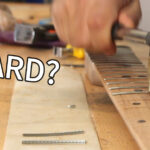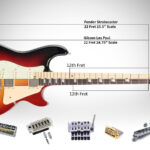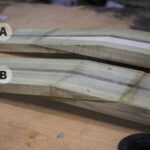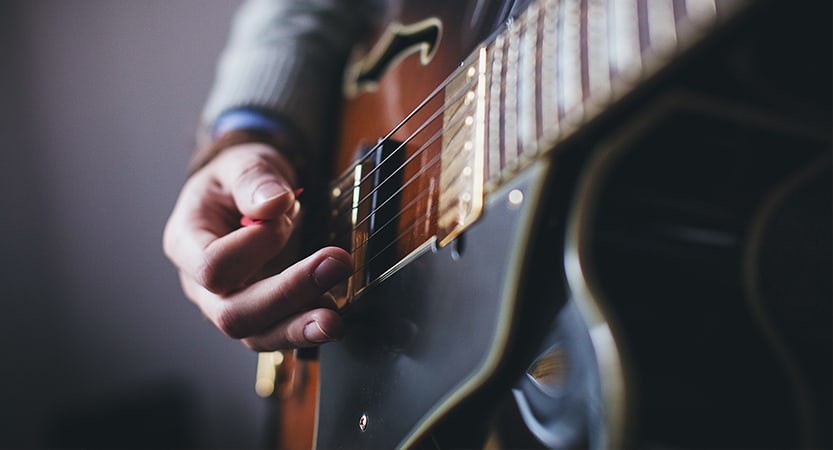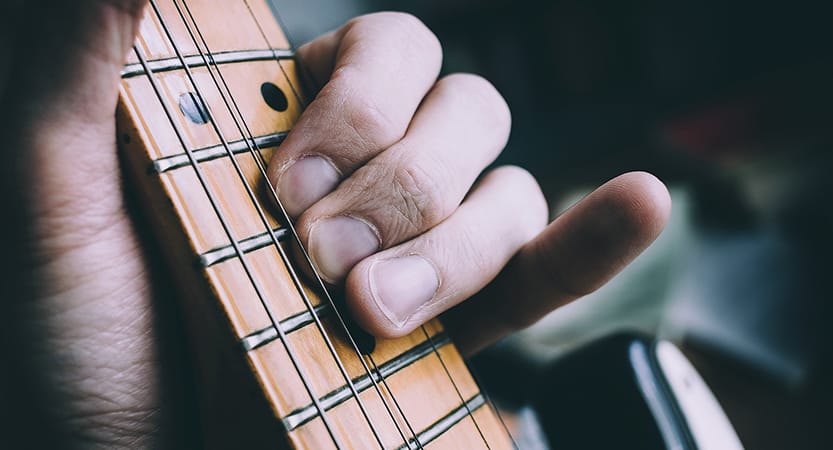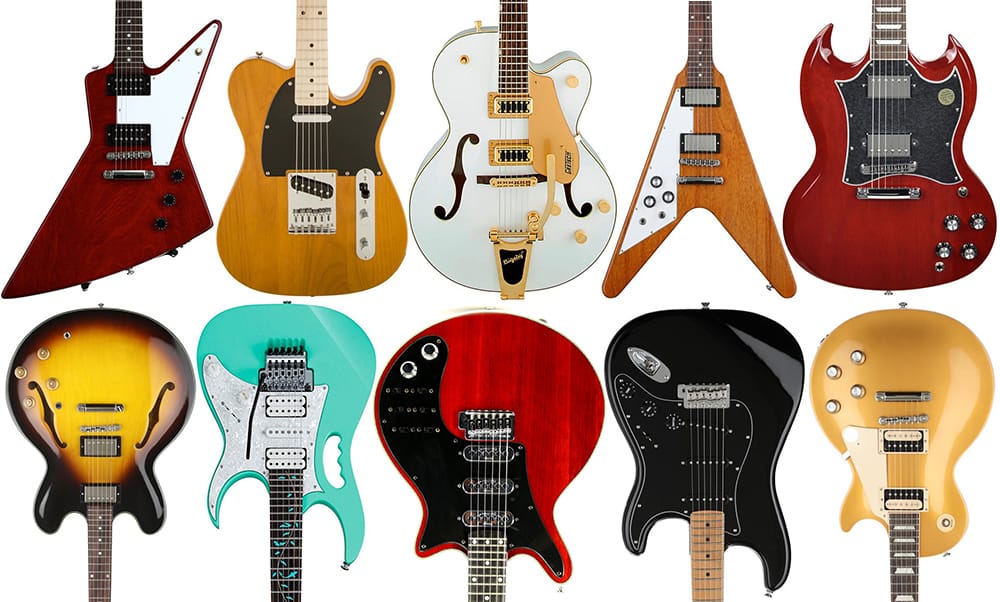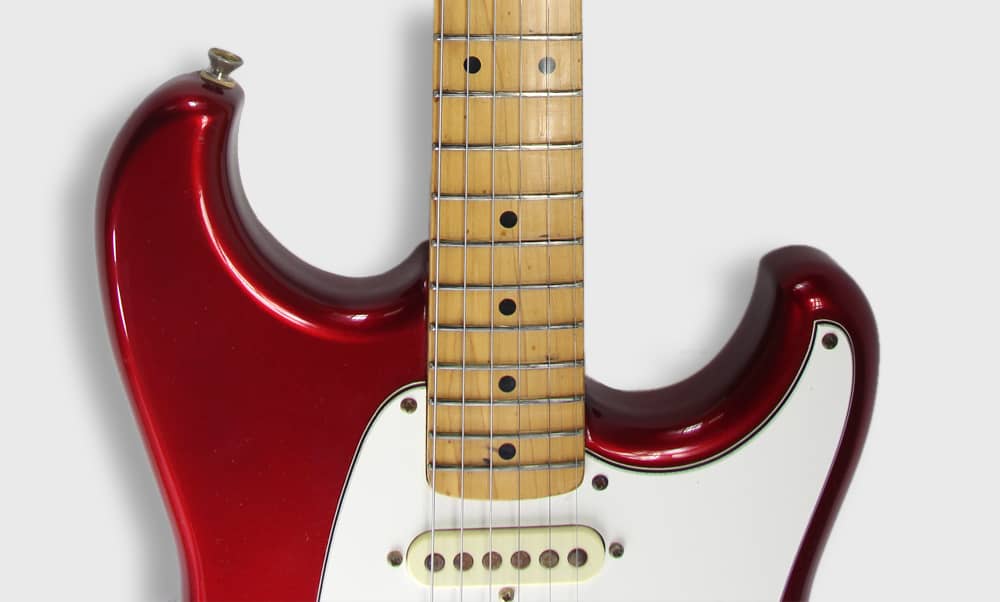You may have noticed that guitars come in different neck shapes and it feels like each neck shape has a different purpose or plays a different key. Other times you may feel more comfortable playing a note via a guitar with a particular neck shape than you feel with the next one. That’s probably because of the difference in neck shapes. The neck shape of your guitar neither affects nor changes the sound of the guitar itself, however, it does affect the way you would play it. Now that may not necessarily make sense to you just yet, but at the end of this little expose you’ll have knowledge of what each type of neck offers. With this knowledge, you can walk into any guitar shop, fully aware of what you’re purchasing. Here are the different but basic shapes guitars come in.
Types of neck shapes
Presently, there are four dominant types of guitar neck shapes, these include:
- C – Shape
- D – Shape
- U – Shape
- V – Shape

Let’s take a closer look at neck shapes styles and other parameters and try and see if there is more to picking a neck aside from ‘The right feeling’.
C – Shape neck
The C – Shape neck is the commonest neck type of today. It has a symmetrical oval shape which makes playing really comfortable. Just as how the letter C is shaped, this is how a C – shaped guitar neck is. They are obviously not as deep as either the V or the U – shaped guitars and they are referred to as ‘Modern C’ by guitar making companies like Fender. This type of guitar is perfect for playing with most styles and offers an easy grip.
D – Shape neck
This neck shape is common to classical guitars. The shoulders of this guitar is seen to protrude in a vertical manner and then go over the radius of the neck. This neck shape is usually mistaken for a C – shaped neck but it has flatter edges than the latter. This type of guitar is usually found in the custody of rock stars and musicians who love playing very fast tunes or using techniques which involve rapid movement of the strings.
U – Shaped neck
These necks are more rounded and perhaps even ‘chunky’. They have high shoulders too and could either be deep or soft. Players who love or feel more comfortable having their thumbs on the posterior of the neck or even on the side, will prefer this shape to others. Players with large hands will also find this shape more aligned to their palms and easier to use than others.
V – Shaped neck
This could either be soft or hard. The soft V – shaped neck is more rounded while the hard one has a pointed apex. The latter (hard) V – shaped neck usually gets preferred over the soft because it gives players the comfort they seek when their thumb hangs over the edge belonging to the fingerboard. The V – shaped guitar neck is however ‘old school’, but it still turns up as instruments which have been reissued.
A – Symmetrical Neck Shapes
Apart from the diversity in the neck shape of guitars, one also needs to know how centralized they are. Are they symmetrical or asymmetrical? Well, they could be either of those and here’s the implications of that. Traditional guitars have a symmetrical neck shape and this comes with a fixed center line position, with exceptions to some models. Asymmetrical guitar neck shapes can be ‘Extreme’, this means that they have a raised line at its back (back line). They could also be ‘Progressive’, having a back line that is raised and centered, or ‘Extreme Progressive’, this is where the back line is both raised and lowered at the same time. Asymmetrical necks are only designed to enhance the hand’s alignment and player’s comfort when playing. It offers a way of reducing or fully excluding the pain and strain felt on the wrist, forearm and fingers. Well, it wouldn’t be complete if we didn’t discuss a little about the history of these neck shapes.
Historical Development
The diversity in guitar neck shapes didn’t all happen in a day, it took time and repeated use for different shapes to be made in correlation with its symmetry and design. The existence of guitar neck shapes became noticed in the 50’s, early 50’s, to be precise, where the U – Shape guitar was made but with repeated use, it was thought to be deep and not comfortable enough and a few years later the Soft V – Shaped neck was incorporated. This was followed by the Hard V – shaped neck in the mid 50’s and a couple of years later, in the 60’s we witnessed the evolution of the C – Shaped neck which has .810” at its first fret. It didn’t end here. All must go on after all and presently the D – shaped guitar neck is widely used across the world. However, other neck shapes have been modernized as well, just to keep the flow and precision of use, but they still maintain their initial idea. In spite of this, the D – Shaped neck is still the latest neck shape made by guitar companies today.
Who played what style?
Guitars are for creating beautiful music after all and you probably want to know which celebrities and icons played what guitar neckstyle, just as a bonus fact. Well, you’re in luck. Let’s string you along shall we. The greatest guitarists were known for one thing, pushing the boundaries. They weren’t known to sit back and play someone else’s style, they made their own whilst using the different neck shapes. These icons include the likes of B.B. King who made use of the U – shaped Gibson ES-355 guitar, Jimi Hendrix using his C – shaped Stratocaster to give us those rhythmic chords we love so much, Stevie Ray who was said to play the Blues like a possessed man played this with his U – Shaped Fender Stratocaster. Although most great musicians may have had their personal favorites, the guitar was just an instrument to channel their talent, even with different neck shapes or Guitars. Listen to Eric Clapton, mostly associated with a Stratocaster, play a Gibson Neck and he sounds just like… Eric Clapton.
Width, thickness and Fretboard Radius
This goes without saying that when talking about guitar necks, its width and thickness also matter in giving you a firm and comfortable grip. The width of a guitar neck is measured from side to side while its thickness is that distance
This matters as much as the thickness and width of the guitar’s neck. The purpose of these values is to have the fingerboard match the natural curvature of the palm consistently.
Guitars come in different fretboard radii.
These are:
- 7.25”-Typical of Vintage Fenders
- 9.5” – More contemporary Fenders
- 12” – Gibson Les Pauls
- 14”
- 15”
- 16”, 17” & 20” – Ibanez, mostly newer models
A guitar with a 7.25 fretboard radius conforms more to chording, but is known to choke around big bends. Guitars with a 9.5 fretboard radius act as a conjunction between fast play and chording but was mainly introduced to checkmate the choking problem of the former. The 12 inches radius works better with respect to speed and bends as you can lower the action with this radius and increase the ease of play. The 14 & 15 inches fretboard radius offers balance for players with slightly bigger palms. It gives that comfort and enables fast play as well. The 16”, 17” and 20” guitars are specifically for very fast play with very low action. As a rule of thumb, tighter radius (7.25”-9.5”) is more comfortable for rhythm, the very flat fretboards (15”-20”) lend themselves to faster finger speed and shredding and the 12”-14” range is probably a good compromise.
Let’s not forget Compound Radius Necks which may start with a tight radius at the nut and ‘flare’ to a much wider/ flatter fretboard closer to the body, to get the best of both worlds.
Summary
The guitar has been the instrument that propelled lots of musicians to greatness. With every strike of the string, there is something more different, more daring than the last. Before purchasing a guitar, things like its neck shape and measurements should come to your mind because these guitars are not only grouped according to their purpose, they are equally separated based on their neck shapes. Through this piece, you know what each neck shape offers with respect to outlook, balance, and grip. Each neck shape would lead you to play this instrument differently, and now you know what to expect from them. Bottom line is that it is mostly a matter of personal comfort and preference. There is no better way to decide which guitar neck shape or fretboard radius works for you, than playing on different guitars until you figure out which suits you just right.
Related Questions
How do you measure the thickness of a guitar neck?
The thickness of a guitar neck is measured with calipers. Just remove the strings, on the nut side of the first fret, place the calipers. This is done at the center of the fretboard, in the middle of the D and G string. Your values should be from 0.775” to an inch.
What is the best wood for guitar necks?
The most common are Maple or Mahogany. They are strong and provide a hard yet supple and smooth finish.

